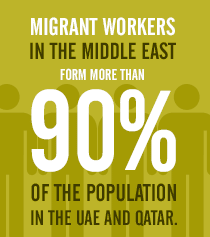Author: Stephanie Ortiz

I had the pleasure of interviewing Doug Lau over the phone as I overlooked Vancouver’s smoky skyline following the BC Day long weekend. We chatted about his recent experience in Nairobi working as a Junior Professional Consultant (JPC) through the United Nations Association of Canada. Doug was hired as a JPC by UN-Habitat, an agency that promotes sustainable urban and human development as well as adequate shelter for all. Doug expressed that the opportunities felt endless in this lively East African city as he made his way to work every day. Something that struck Doug about Nairobi was the city’s vibrancy and the optimism that people had about the future. We discussed what it was like working at the UN office in Nairobi, his responsibilities as a JPC with UN-Habitat, and the challenges of working abroad.
During his six-month contract term, Doug discovered that the UN office in Nairobi -which has roughly 5,000 employees from all over the world- was “quite an exciting place to work.” Doug’s office was located in a zero emissions building on campus and the UN Nairobi campus was recounted as being a forward thinking place, with an open-space concept, and indoor gardens –features that align with the UN-habitat mandate. The overall campus was illustrated as having preserved gardens, lined with elegant trees, and manicured grass and described as an incredible and lively place.”You could feel that people around you were very capable and motivated,” Doug recalled.
As a JPC, Doug carried two major responsibilities. The first being monitoring and evaluating programs. He developed systems to track performance, assessed the progress of those involved, gave feedback, and then provided and guided the necessary adaptations. His second responsibility comprised of reporting essential information to stakeholders and donors. “One of the coolest parts of working with the UN is working with diverse partners.” This experience gave Doug the opportunity to collaborate with other different units and external agencies based in Nairobi. This allowed him to work with other local governments, delegations from foreign diplomatic missions, community groups, women’s groups, youth groups, and more.
However, relocating and working somewhere unfamiliar often brings along a string of challenges. Doug confessed, “it’s always difficult to adjust to working in a new city. Not only do you need to learn the new office, practices, and procedures,” you inevitably have to combine it with figuring out the transportation system, where to get groceries, and so on. Doug added, “but it becomes very rewarding as the months go on.”
When asked whether he would recommend this type of work experience to others, he responded, “Absolutely. This has been an incredibly formative experience, not just in my professional career but for my personal development. It’s an incredible opportunity and privilege to work in this field. Development work hasn’t been around long enough but it’s a great field to work in and very rewarding. It’s Important to understand how competitive this field is and how important the work you’re doing is. You’re competing from a pool of candidates from all corners of the world and it should be approached as such. It’s tough, something that needs to be taken seriously. Work hard and don’t be discouraged if you don’t get in right away. It can take time. And just remember that not all citizens of all countries have the same opportunities.”
If you’re considering a career in development, the 2017 Hiring Trends Report: The Jobseeker’s Guide to Development Recruiting is well worth a read. If you’d like to participate in the UNA Canada’s International Development and Diplomacy Internship Program, you can visit the Facebook page for more information. The deadline to apply is September 5th, 2017.











